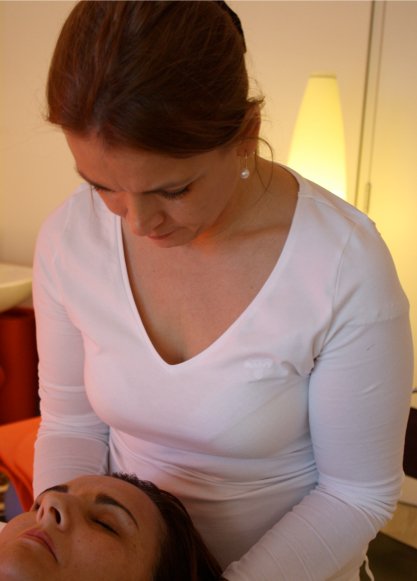Tinnitus can be positively influenced in combination with physiotherapeutic treatment, especially if muscular tension in the neck, shoulder or jaw area is involved. Targeted physiotherapeutic measures such as manual techniques, posture improvement, stretching and relaxation exercises can release tension, improve circulation and relieve the nervous system. The aim is to minimise physical causes and alleviate the symptoms of tinnitus.
Tinnitus describes ear noises such as whistling, ringing, buzzing or hissing that are only perceived by the person affected. These noises can be loud or quiet, high or low in frequency. Tinnitus can occur suddenly or gradually, and varies in duration - from occasional occurrences to permanent noises. Tinnitus is sometimes accompanied by dizziness, noise sensitivity (hyperacusis) or hearing loss. The impact on quality of life varies depending on the intensity and accompanying symptoms.
Causes
Acoustic Trauma
Trauma caused by noise accounts for the largest share of up to 30%. Concerts and discos with a noise level of more than 80 decibels can already cause acoustic trauma. Noise pollution in the workplace can also be a trigger. Damage to the hair cells within the inner ear disturbs sound transmission. Immediate acute treatment by an ENT specialist is important. In most cases, an infusion treatment is carried out in order to improve the perfusion.
Sudden Hearing Loss
Hearing loss is often combined with tinnitus; sometimes these noises remain even after healing.
Morbus Meniere
Morbus Meniere is a seizure-related vertigo that can be combined with deafness and tinnitus. Here, damage also occurs in the inner ear.
Problems of the cervical spine and temporomandibular joints
Experience tells us that disorders in the area of the cervical spine can make tinnitus worse, but this is less frequently the sole cause of tinnitus. The temporomandibular joint, on the other hand, can cause tinnitus quite easily. The masticatory musculature has a direct connection to the Eustachian tube, and any disturbance that increases the tension of the masticatory muscles, such as and grinding the teeth, or even poorly fitting prostheses, stresses the temporomandibular joint mechanically.
Functional disorders in the area of the head joint, as well as degenerative processes on the cervical spine, almost always affect circulatory supply of the vertebral artery. This is especially important for the inner ear and the cerebellum.
Tendon joint problems, as already discussed, can cause tinnitus. The trigeminal nerve, which supplies the temporomandibular joint, has nuclei in the area of the head joints; both problems can thus interact neurophysiologically. There is also a purely mechanical connection with postural habits. Both regions, temporomandibular joint and cervical spine, must therefore always be considered and treated. Another cause is stress-induced tension in the shoulder girdle and cervical spine.
Treatment approaches
Of course, physiotherapy and osteopathy represent only one building block in the overall concept of tinnitus treatment. Coping strategies are used especially in chronic forms of tinnitus. These strategies should enable the affected person to shift the ear noise into the subconscious. Generally, the quicker a patient receives therapy, the more successful it is.
Specific treatment of dysfunctions
Specific treatment of dysfunctions of the cervical spine and temporomandibular joint, as well as the associated functional chains and disorder mechanisms. This requires comprehensive functional analysis that involves the spine, pelvis and lower extremities.
Treatment of muscle tension disorders
Treatment of muscle tension disorders Deblocking the upper cervical segments, targeted massage, stretching of neck muscles and locally applying heat are always to improve blood circulation and reduce tension.
Coping strategies
Progressive muscle relaxation according to Jacobsen (physiotherapists); influence on the autonomic nervous system via yoga breathing techniques (by physiotherapists); autogenic training (psychologists or doctors).
Craniosacral therapy
For the treatment of tension problems in the area of the skull, the cerebral and spinal cord (dura). Again, here, excessive tension reduces the supply of structures in the skull.

